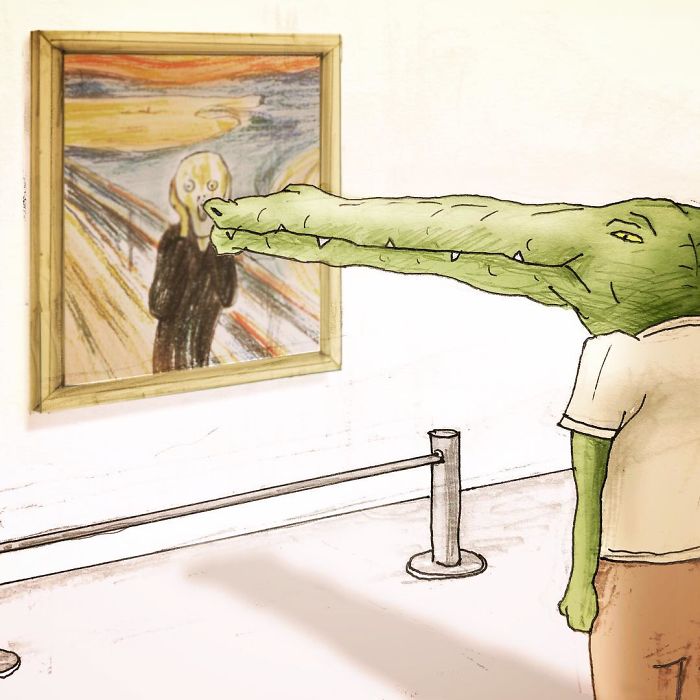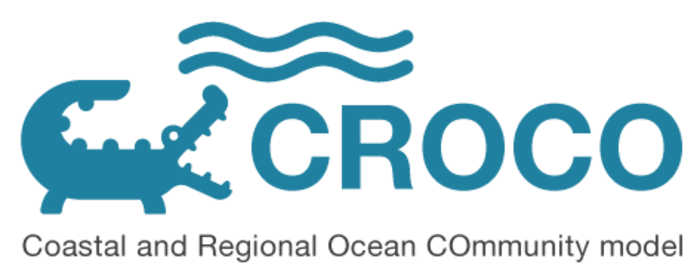CROCO’S Documentation  #
#
CROCO is an oceanic modeling system built upon ROMS_AGRIF and maintained by IRD, INRIA, CNRS, IFREMER and SHOM, French institutes working on environmental sciences and applied mathematics. An important objective for CROCO is to resolve very fine scales (especially in the coastal area), and their interactions with larger scales. It includes new capabilities such as a non-hydrostatic solver, ocean-wave-atmosphere coupling, evolving sediment dynamics and marine biogeochemistry, new high-order numerical schemes for advection and mixing, and a dedicated I/O server (XIOS). A toolbox for pre- and post-processing, CROCO_TOOLS, accompanies the source code. CROCO will keep evolving and integrating new capabilities in the following years.
- Model Documentation
- 1. Governing Equations
- 2. Model variables
- 3. Grid and Coordinates
- 4. Numerics
- 5. Parametrizations
- 6. Parallelisation
- 7. Atmospheric Surface Boundary Layer
- 8. Open boundaries conditions
- 9. Rivers
- 10. Tides
- 11. Nesting Capabilities
- 12. Other modules : sediment models, flow-obstruction models, biology models
- 13. Coupling CROCO with other models
- 14. I/O and Online Diagnostics
- 15. Review of test cases
- 15.1. Basin
- 15.2. Canyon
- 15.3. Equator
- 15.4. Inner Shelf
- 15.5. River Runoff
- 15.6. Gravitational/Overflow
- 15.7. Seamount
- 15.8. Shelf front
- 15.9. Equatorial Rossby Wave
- 15.10. Thacker
- 15.11. Upwelling
- 15.12. Baroclinic Vortex
- 15.13. Internal Tide
- 15.14. Internal Tide (COMODO)
- 15.15. Baroclinic Jet
- 15.16. Plannar Beach
- 15.17. Rip Current
- 15.18. Sandbar
- 15.19. Swash
- 15.20. Tank
- 15.21. Acoustic wave
- 15.22. Gravitational Adjustment
- 15.23. Internal Soliton
- 15.24. Kelvin-Helmoltz Instability
- 15.25. Horizontal tracer advection
- 15.26. Sediment test cases
- 15.27. Kilpatrick
- 15.28. Seagrass
- 16. Appendices
- Tutorials
- 1. System requirements
- 2. Download
- 3. Contents & Architecture
- 4. Summary of essential steps
- 5. Test Cases
- 6. Regional: Preparing your configuration
- 7. Regional: Preprocessing (Matlab)
- 8. Compiling
- 9. Running the model
- 10. Increasing the resolution: BENGUELA_VHR
- 11. Running with interannual forcing
- 12. Running forecasts
- 13. Nesting Tutorial
- 14. Adding Rivers
- 15. Adding tides
- 16. Visualization (Matlab)
- 17. Python tools for CROCO
- 18. NBQ Tutorial
- 19. Coupling tutorial
- 20. Littoral dynamics tutorial
- 21. Realistic coastal configuration
- 22. XIOS
- 23. Tips
- 24. CROCO/MUSTANG tutorial & tips
- 25. TRAINING 2019: DATARMOR specific
- 26. Ifremer specific
